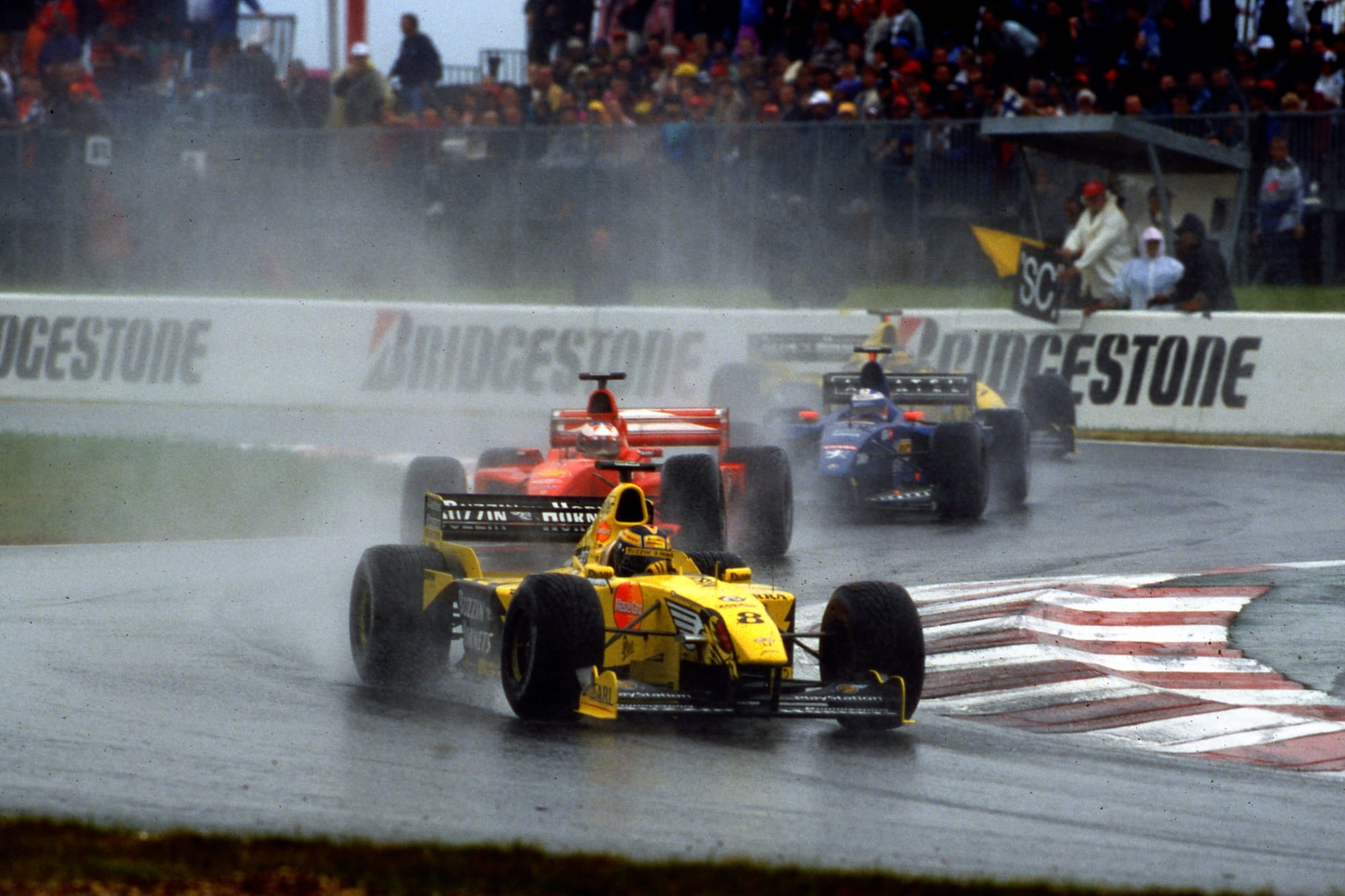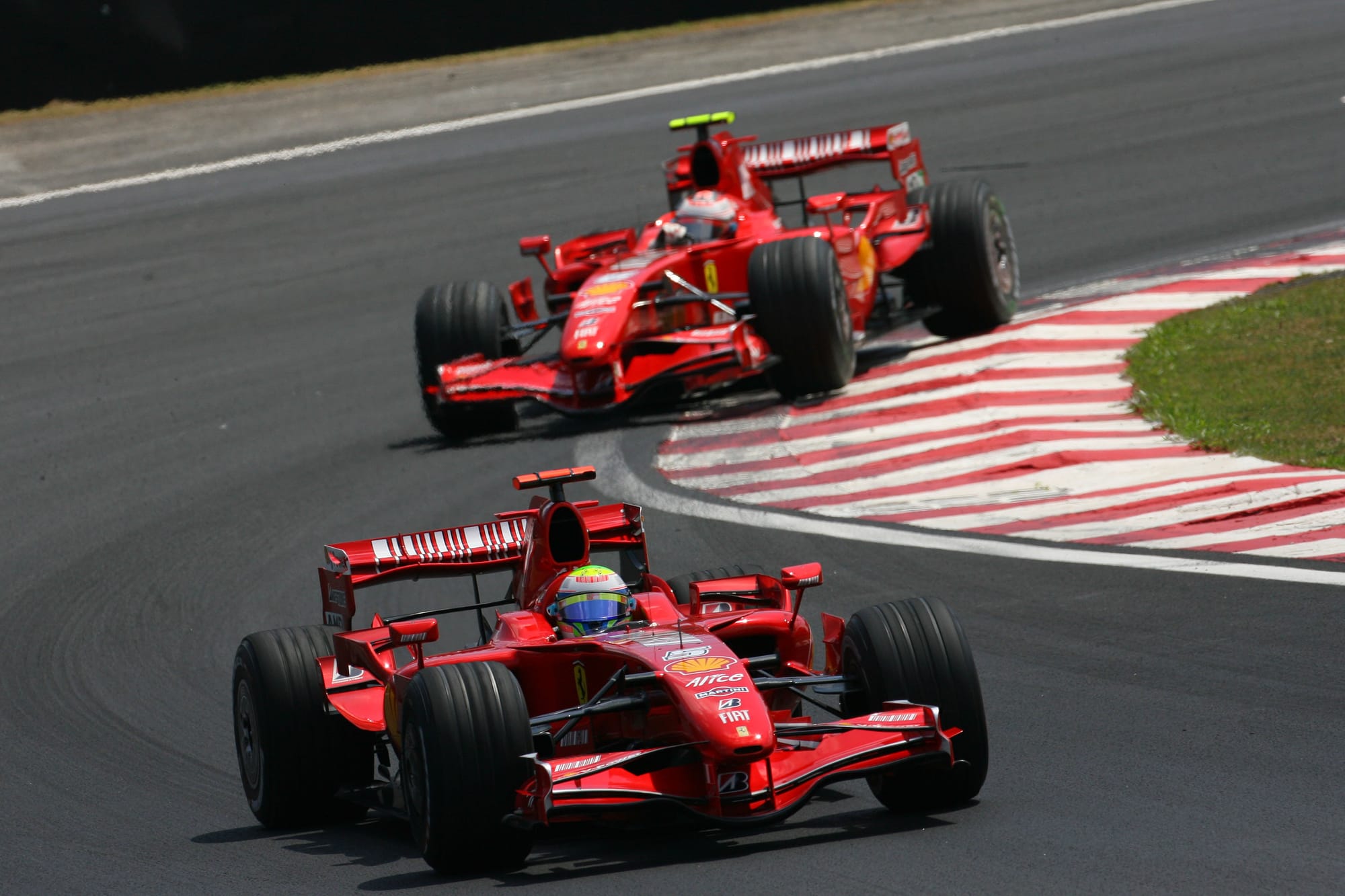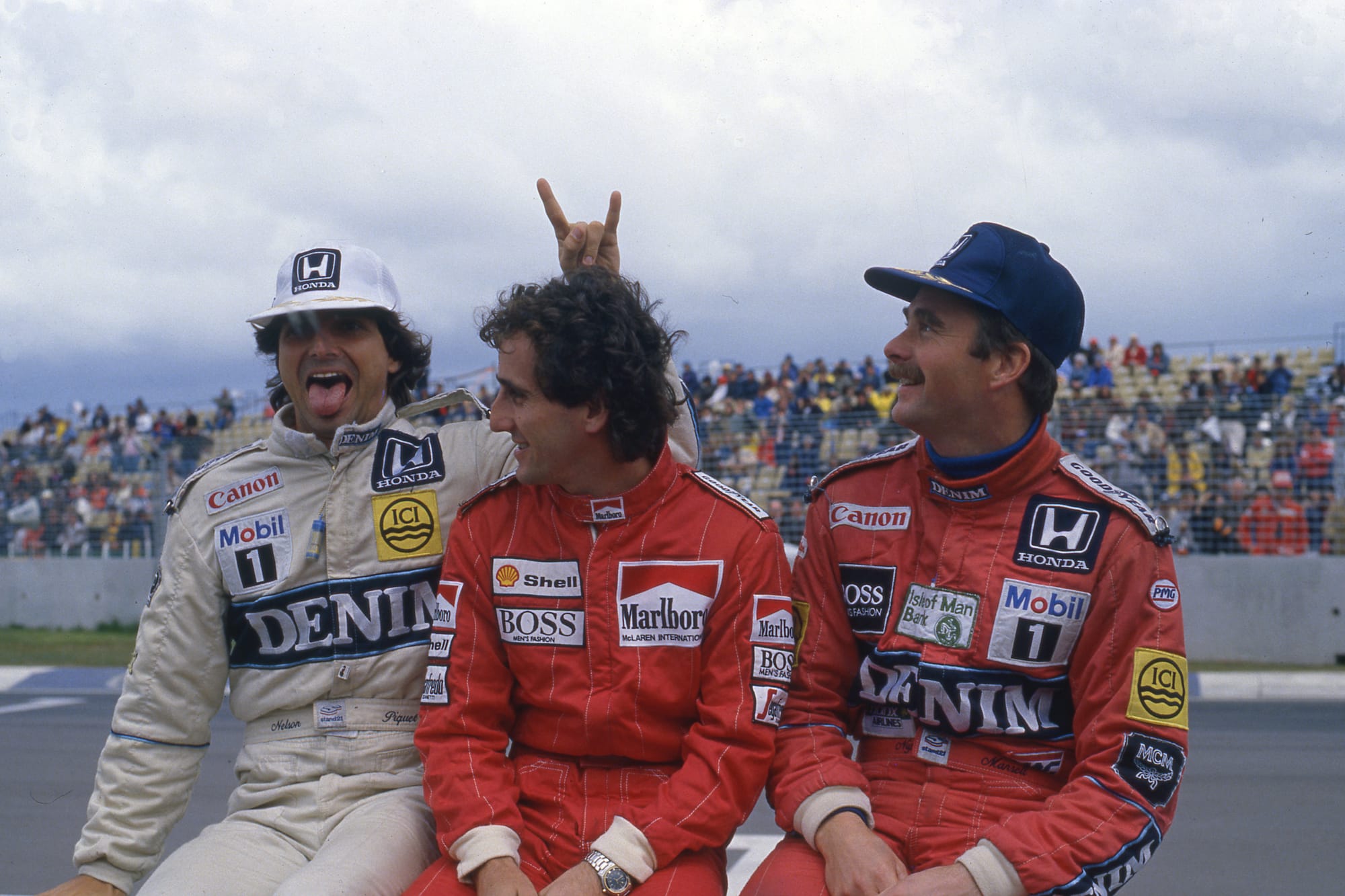With four rounds to go, Formula 1 2025 is going to produce the first three-way title fight of the hybrid era.
That’s thanks to Red Bull and Max Verstappen unexpectedly joining McLaren’s intra-team title fight, as he’s cut his points deficit from 104 after Zandvoort five rounds ago to just 36 points.
No two title fights are ever the same, but lessons from the past can always be learned, so here’s what 2025’s title contenders could take away from previous three-way fights…
One stumble can kill an underdog's bid

Momentum can be a powerful thing in sport, so too can carrying underdog status. You’re chasing down and taking big chunks out of a points lead week-in, week-out, with seemingly nothing to lose.
Plus, you’re the plucky underdog who is very easy for neutral fans to get behind. That’s pretty much the role Verstappen’s been cast in for 2025.
Yes, it’s a little strange to call a four-time world champion an underdog, but given the scale of the title comeback Verstappen is trying to mount, he has to be classed as such.
But there’s an important lesson to be learned from another underdog - perhaps the greatest underdog title bid of all time: Heinz-Harald Frentzen’s 1999 effort in a Jordan.
While McLaren's reigning champion Mika Hakkinen was battling Ferrari’s stand-in number one driver Eddie Irvine (once Michael Schumacher’s Silverstone shunt had sidelined him and Ferrari decided it had to back Irvine), Frentzen emerged as a surprise contender too.
Consistent podiums plus a well-judged victory in changeable weather at Magny-Cours kept him within range, and then things got serious when he won at Monza after Hakkinen spun out of the lead when he inadvertently selected second gear, rather than first.
That put Frentzen just 10 points shy of joint leaders Hakkinen and Irvine and allowed Frentzen to dream the impossible, especially when he claimed pole for the next race at the Nurburgring.
But then infamously, Frentzen’s Jordan ground to a halt in the race with what the team initially said was “an electrical issue”.
It later transpired that Jordan was protecting both Frentzen and his race engineer Sam Michael. Frenzten had actually forgotten to turn off an anti-stall system on his car after his first pitstop - something Michael would usually remind him to do.
“He was in the form of his life, which is what made what happened on one hand devastating and on the other hand forgivable because we knew this was a driver who was giving it his all,” Jordan’s then-head of marketing Mark Gallagher told F1’s website two decades later.
“It didn’t need any of us to say to him this was a mistake you shouldn’t have made. He knew himself this was a devastating blow to his championship chances.”
Gallagher said Frentzen was “driving the wheels off the car” and in the form of his life before that devastating blow that prevented him from heading to the final two rounds level on points with Hakkinen and Irvine.
Jordan simply not being quick enough at Sepang and Suzuka means he might have fallen short anyway, but there was also a feeling at the time that Frentzen and the team’s performances sagged a touch because the championship bid had so abruptly become so remote. The Nurburgring DNF was a killer blow to his hopes that nobody could have seen coming.
And it’s the sort of blow that Verstappen, most of the trio, couldn’t afford to have over the next couple of races, or his underdog title dream will die.
Intra-team fights can be a hindrance…

If you think three-way title fight, chances are that you’ll think of either 1986 or 2007.
In both seasons, one driver with the full weight of their team behind them (McLaren’s Alain Prost in ‘86, Ferrari’s Kimi Raikkonen in ‘07) was able to defeat a pair of warring team-mates.
Now, Oscar Piastri and Lando Norris are hardly warring team-mates. Relations remain about as good as can be expected, considering they’re both fighting for a title and have had collisions and team orders controversies.
But McLaren’s management of its drivers and the eagerness to make things fair between its drivers has left it vulnerable to Verstappen - who has no such threat from Yuki Tsunoda, indeed as it showed in Mexico, Red Bull has no qualms about compromising Tsunoda’s strategy if that can help Verstappen.
Neither Norris nor Piastri have that luxury of using the other as a wingman at McLaren, and while they can theoretically take points off Verstappen, they haven’t both finished ahead of Verstappen in a race since before the summer break.
They’ve primarily been taking points off each other all season. Had one of them established a more dominant position - even finishing ahead two-thirds of the time - then Verstappen would be out of reach. That’s exactly the same scenario that played out for Williams with Nigel Mansell and Nelson Piquet in 1986 as Prost lurked with them and for McLaren with Fernando Alonso and Lewis Hamilton in 2007 with Raikkonen on their tails.
If anything the 2025 McLaren team-mates are the closest-matched pairing in this scenario so far, with their metrics so evenly split (a median average qualifying gap of just 0.014 seconds in Piastri’s favour), and Piastri having seven race wins to Norris’s six.
…but team-mate support can be critical

Tsunoda’s strongest weekend in a while was well timed for him finally being fast enough to race the McLarens on track in Mexico, even if it was because he hadn’t pitted yet.
He’s not yet in the ideal sweet spot of being quick enough to closely support Verstappen on track while having no title ambitions of his own. Raikkonen having Felipe Massa in that position in 2007 made all the difference, with Massa dutifully slotting in behind his Ferrari team-mate for a 1-2 in the deciding Brazilian GP, making sure Alonso could do no better than third and ensuring Raikkonen popped ahead of the McLaren pair by the single point that made him world champion. There was no way Hamilton or Alonso would’ve given up a home win for the other in 2007.
And in 2003, Rubens Barrichello (partly inadvertently) saw off both Ferrari team-mate Michael Schumacher’s title threats in the decisive stages of that three-way title fight. Barrichello denying Raikkonen victory in the Suzuka finale meant that however much of a mess Schumacher made of that afternoon (one of his clumsier F1 performances as he had brushes with both Takuma Sato and brother Ralf on a day when he only needed one point), Raikkonen wasn’t going to get the win that was essential for him to overhaul Schumacher.
One round before that, it was a penalty for punting Barrichello that ended Juan Pablo Montoya’s best shot at being F1 champion - and the particular urgency of getting the second Ferrari out of his way surely played a part in Montoya going for a sketchy move. Barrichello was close enough (unlike Raikkonen’s struggling McLaren team-mate David Coulthard) and compliant enough (unlike Montoya’s Williams team-mate Ralf Schumacher) to make a key difference.
Right now, the only 2025 title contender who’d be able to benefit from such team-mate help is Verstappen.
But let’s imagine one of Norris or Piastri has a disaster or two and suddenly at the finale it’s one McLaren versus Verstappen for a title. Given McLaren’s philosophy and atmosphere, there’s no doubt the driver out of the title hunt would be deployed to help the other. Piastri or Norris could ‘be the Barrichello’ in a way Tsunoda definitely can’t unless he makes a gigantic performance leap over the next month.
It's never over until it's over

Having three (or more) drivers in the mix seems to increase the chances of a last-gasp shock turnaround. Maybe the extra paranoia created by having to look over both shoulders at once spooks drivers and teams into stumbles they otherwise wouldn’t have in a more controllable situation.
The classic last-minute swings of 1986 and 2007 prove it. With three-quarters of the 1986 Adelaide finale gone, a Williams title looks guaranteed with Mansell in a third place that would be sufficient and Piquet leading the race. Then in the space of two laps Mansell’s dramatic puncture and Williams’s reactive pitstop for Piquet hands it all to Prost.
Raikkonen was on the brink of elimination from the title fight with two rounds of 2007 left, only for Hamilton’s infamous pit entry retirement with shredded, over-used tyres in China and strange temporary gearbox glitch on lap one in Brazil to take him from having one hand on the crown as a rookie to one of F1’s most notorious last-gasp defeats.
Even though 2010 was technically a four-way fight to the end (with Hamilton still in very long shot contention), it was essentially Mark Webber vs Alonso vs Sebastian Vettel in real terms. And this time it wasn't the team-mates who got each other into trouble but the two championship leaders, as Alonso and Webber's over-cautious strategies based around reacting to each other opened the door for Vettel to vault both and become champion despite having never led the points until that moment. Which would also be the case in 2025 if Verstappen vaulted the McLaren drivers in Abu Dhabi...
This is what has to give Verstappen the most hope right now. If he can just stay in contention to the end, keep McLaren guessing, keep giving the team and its drivers chances to overthink their situation, then history shows there’s a chance for him to snatch it all away at the very end even when it looks like a lost cause.



